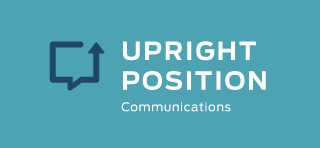It’s been said that success doesn’t come easy, and success in PR is no exception. There are shortcuts and cases where there are ways to get easy wins, but they are rare.
Many startups dabbling their toes in the PR waters seem to be frustrated with the results they receive. There seems to be an expectation that PR yields immediate results in ways that are unlikely and often unattainable. This can lead to a company scaling back on PR efforts before they’ve had a chance to make an impact.
This is not ideal for anyone involved. It’s a phenomenon worth a deeper examination and a viable, sustainable solution. To address this need, I’ve created something I call the Slow PR movement.
If you’re familiar with the Slow Food movement, you know that it is a concept that was formulated as a direct alternative to fast food. It was a movement that emphasized quality over speed and makes for a much better (and tastier) experience. Everyone involved wins–from the local food growers, to the chefs, to the customers enjoying the meals.
The concept of Slow PR isn’t much different: Quality, customized content, audience cultivation and an emphasis on substance over style.
It’s important to emphasize that the “Slow” in “Slow PR” has less to do about the time it takes to pull content together, but more about the investment in hard work involved to deliver results that are sustainable. Diving into a PR campaign without putting time in to developing messaging, relationships and strategy is risky and won’t deliver the desired results. The concept of Slow PR isn’t new, as the term has been used in the past to refer to pitching journalists, but it’s a movement that should be broader than that, and I’ve outlined the key components below.
The 10 Tenets of the Slow PR Movement
#1 – Results are not immediate
I call this the “seven week itch”. One thing that’s consistent with tech startups working with PR agencies or consultants for the first time is how antsy they tend to get before they start to see results.
You can almost set your watch by the fact that about seven weeks into the relationship, there’s concern that there aren’t any measurable results in terms of articles, coverage or leads. The knee-jerk assumption from the client, of course, is that whatever they’re doing on the PR front isn’t working. Not true.
Here’s the mantra for Slow PR: Good results take time, require solid messaging groundwork and need a strong fostering of your media network. There are exceptions, but for the most part, solid, sustainable media results require a foundation that needs to be built.
#2 – Make sure your strategy reflects where you are right now
It’s not uncommon for a mobile app developer to say at the start of a PR campaign that they want a specific reporter to review their app. There’s nothing wrong with with wanting to aim high and to clearly outline the desired results. However, it’s important to be reminded that PR professionals, by nature, are people pleasers and want to make sure their clients are happy. This is a hard urge to fight, however, it’s important to always be careful what you wish for.
If you have a new app and you want a review from a strong critic, make sure that the app is ready for that level of scrutiny. When Walt Mossberg reviewed the Humin app for the iPhone, I could almost hear the client ordering their PR professional to “make sure Mossberg reviews our app”.
Again, it’s great to have a lofty goal, but be careful what you wish for. In an ideal world, the PR professional would have kicked back at the suggestion of Walt Mossberg reviewing the app and countered with reasons why the app wasn’t quite ready for that level of scrutiny or exposure.
#3 – Build strong relationships with journalists from the very beginning
If you only reach out to people when you need them, what’s the benefit for them? I’ve long believed that the journalist/PR relationship needs to be a two-way street.
I’ve often been in situations where a journalist needs something that I either don’t have or can’t provide. For the sake of the relationship, when that happens, I will go out of my way to help them out, even if it means me pointing them in the direction of the competition.
#4 – Press releases aren’t news and are seldom read
I’ve written in the past about the love-hate relationship PR professionals have with the press release, but there are two important takeaways here:
- The press release is a tactic, not a strategy.
- Journalists are not sitting at their desks waiting for your press release to arrive.
#5 – Time spent on messaging is crucial
The foundation of the Slow PR movement is built on telling the right story to the right audience.
At the early stages of instilling a strategic PR infrastructure, it’s worth taking the time to craft the story you want to tell so that it’s cohesive, consistent and will resonate your key stakeholders.
#6 – Know the value of journalists regardless of where they work
While it’s a huge boost to get a story placed in the Wall Street Journal or Bloomberg, they may not be the most influential media outlets for your core audience. Trade media traditionally has lower readership/viewership, but in most cases, their readers/viewers are they key decision makers when your product or company is concerned.
#7 – Quality over quantity
Potential clients frequently ask me how I measure success, and for each the answer depends on what they’re trying to achieve. For analyzing results, AirPR has an excellent product that measures both quantity and quality, but at the core, preferential results would include a few, select, in-depth stories that are on-message rather than sheer numbers of media clips that merely mention my client’s company or products.
#8 – Your own news isn’t what always gets results
The secret to successful PR is the “steady drumbeat of momentum”: Finding and creating opportunities between the launches and the announcements. If you succeed there, you’re doing something right.
A good example of this is when you’re able to interject your story into the current news cycle. This works particularly well when you’re positioned as an expert. One of my clients, Dr. Judy Melinek has done a wonderful job of this: While on the promotion path for the book she co-wrote with her husband T.J. Mitchell, she has been providing excellent expert commentary on the Michael Brown case in Ferguson, Missouri.
#9 – Understanding where ego plays a part
Let’s be honest – a lot of media coverage is ego-driven. There’s no shame in wanting exposure for reasons beyond brand awareness and the bottom line, just make sure you balance it with messaging that transcends ego.
#10 – Always ask why
Behind every effective PR strategy there are many, many questions, but the most important question asked is “Why are we doing this?”. If the answer doesn’t address a specific business need, then it is worth reconsidering.
Slow PR doesn’t require a drastic change to what you’re likely doing, but it does require a mindset shift that recognizes strategy and messaging over immediacy.
In your experience, are there any other Slow PR tenets worth considering? Please share them in the comments section.

